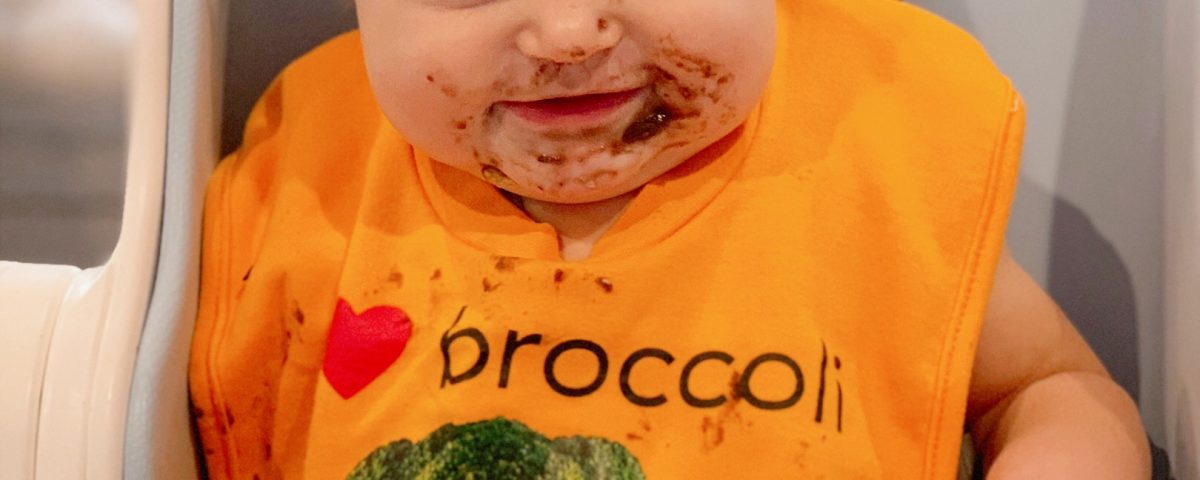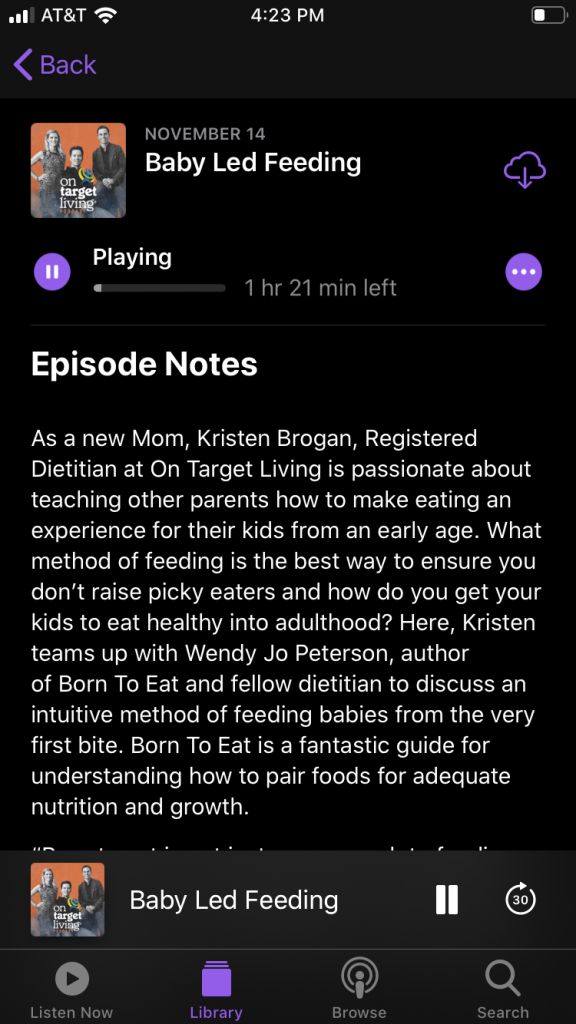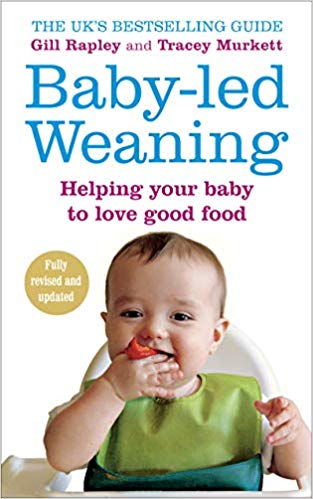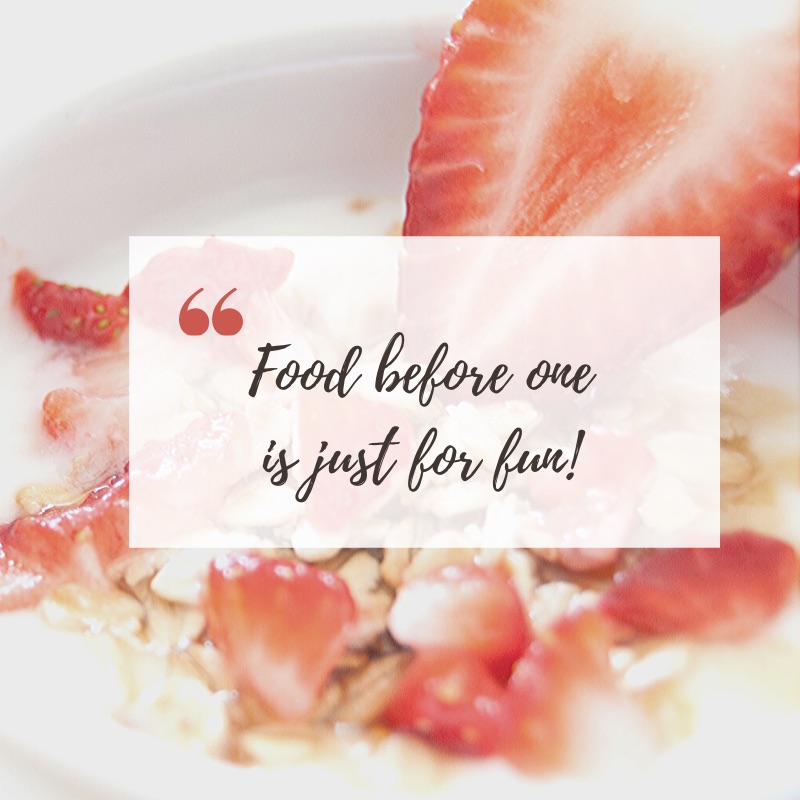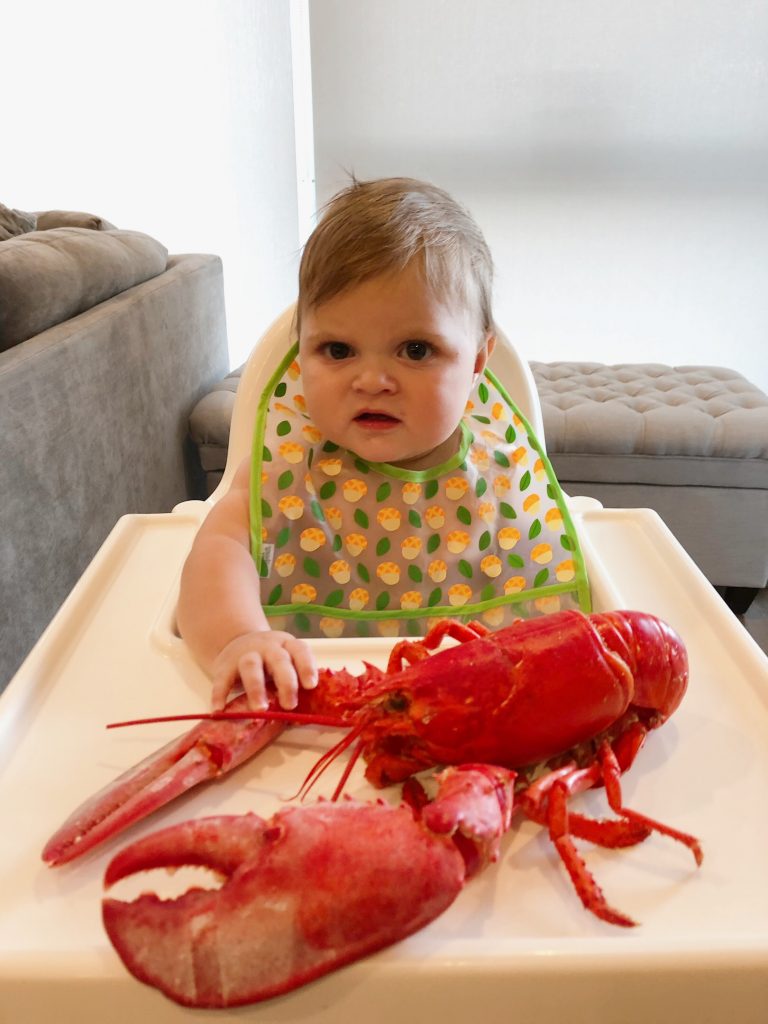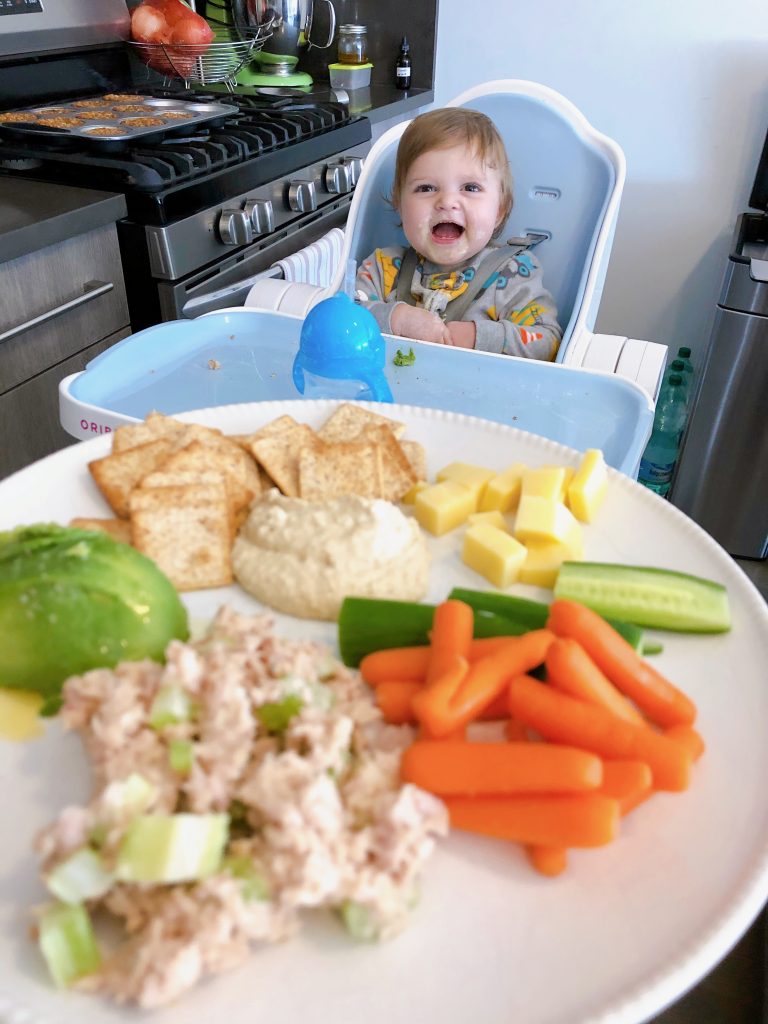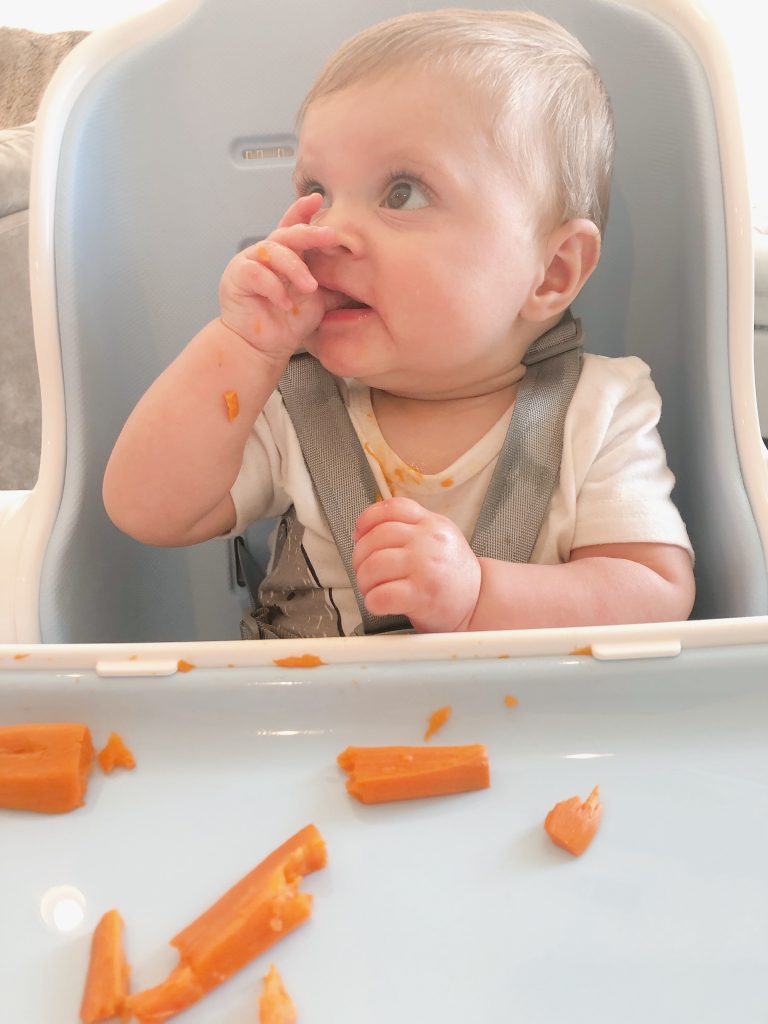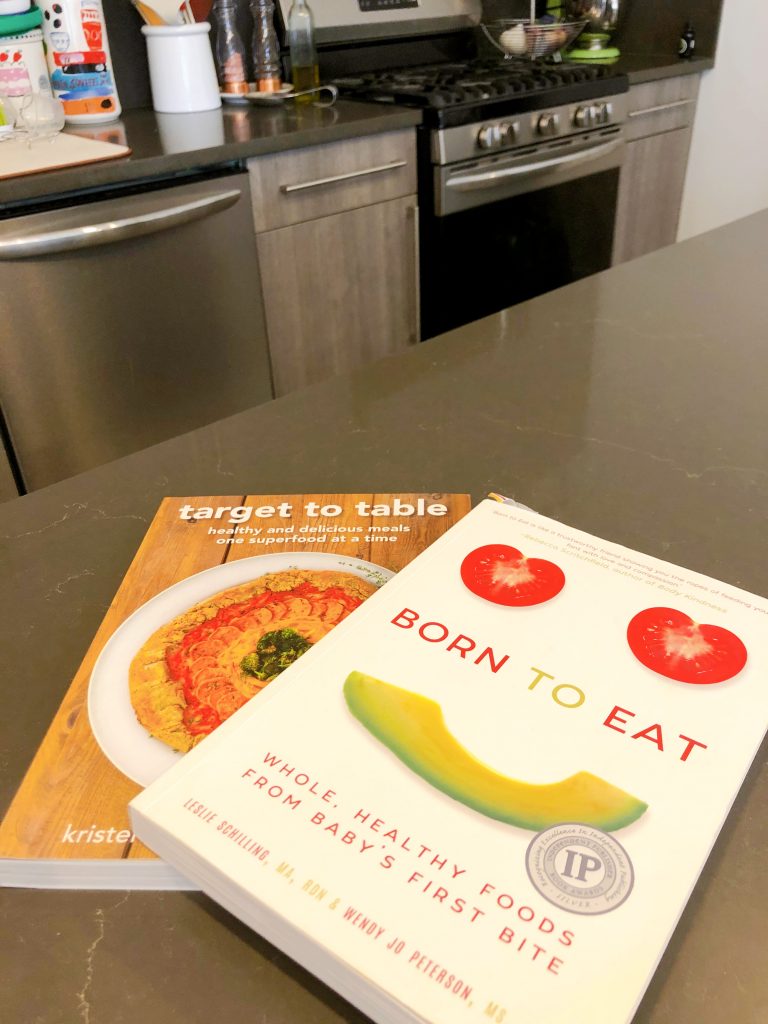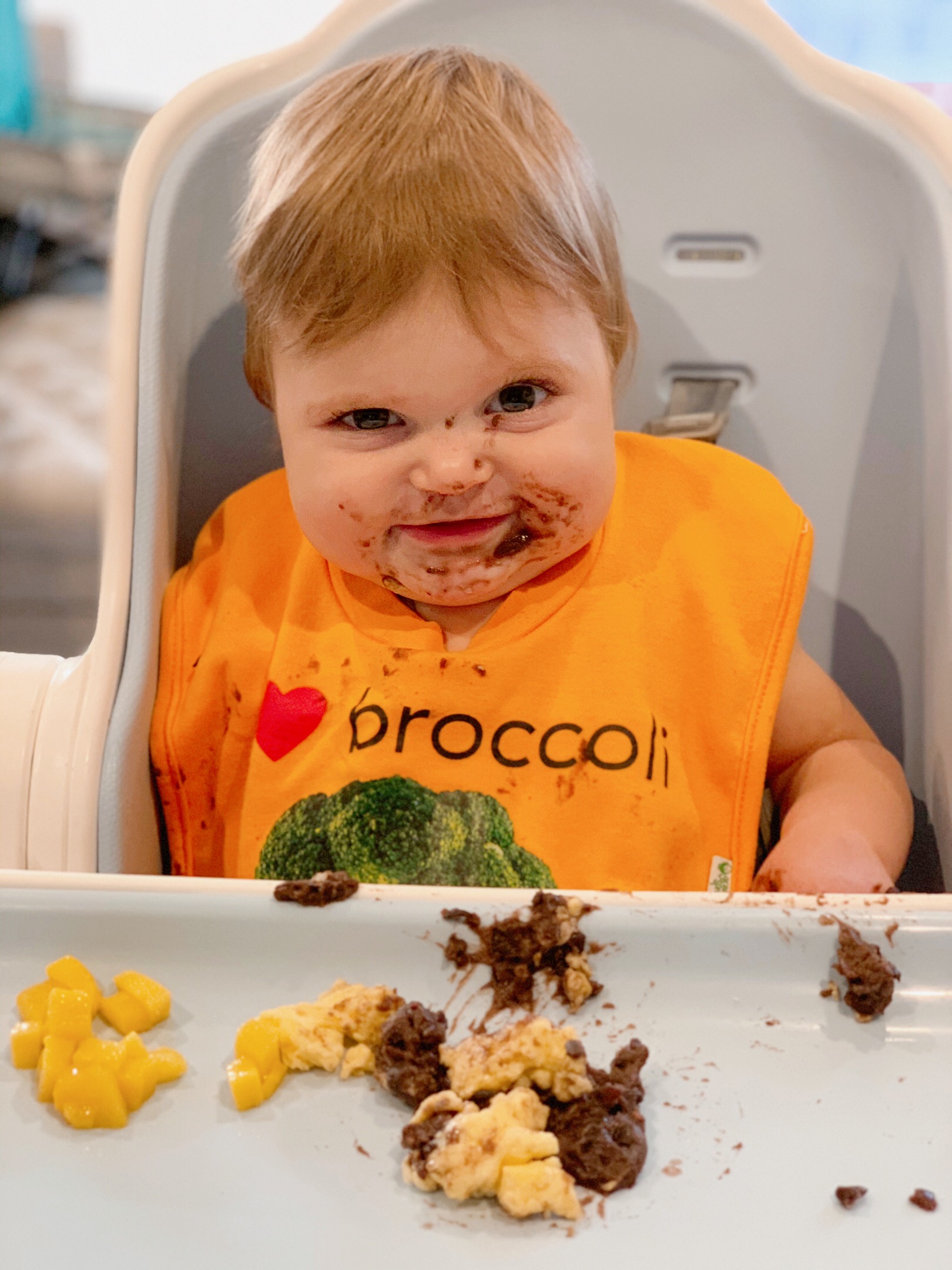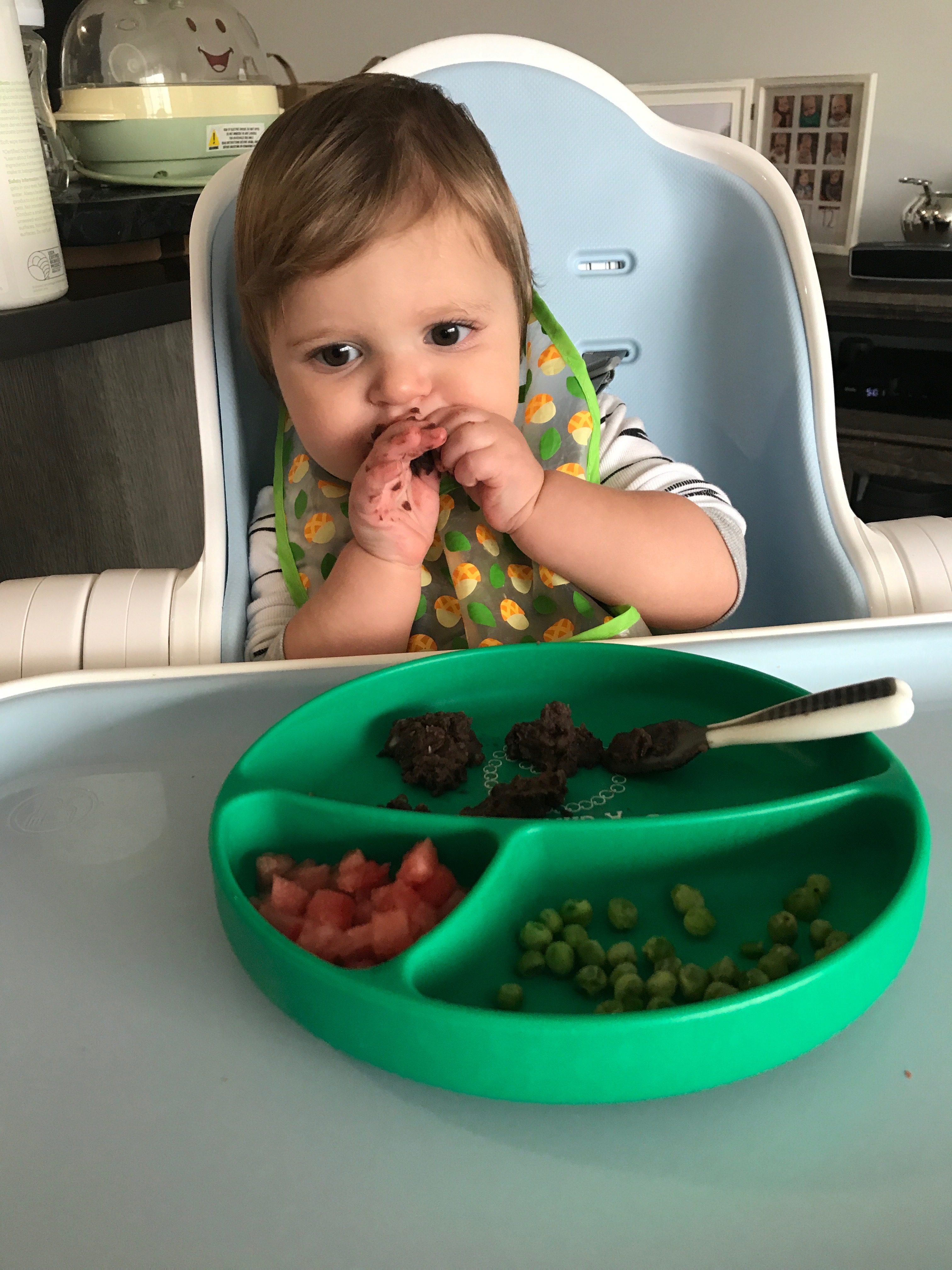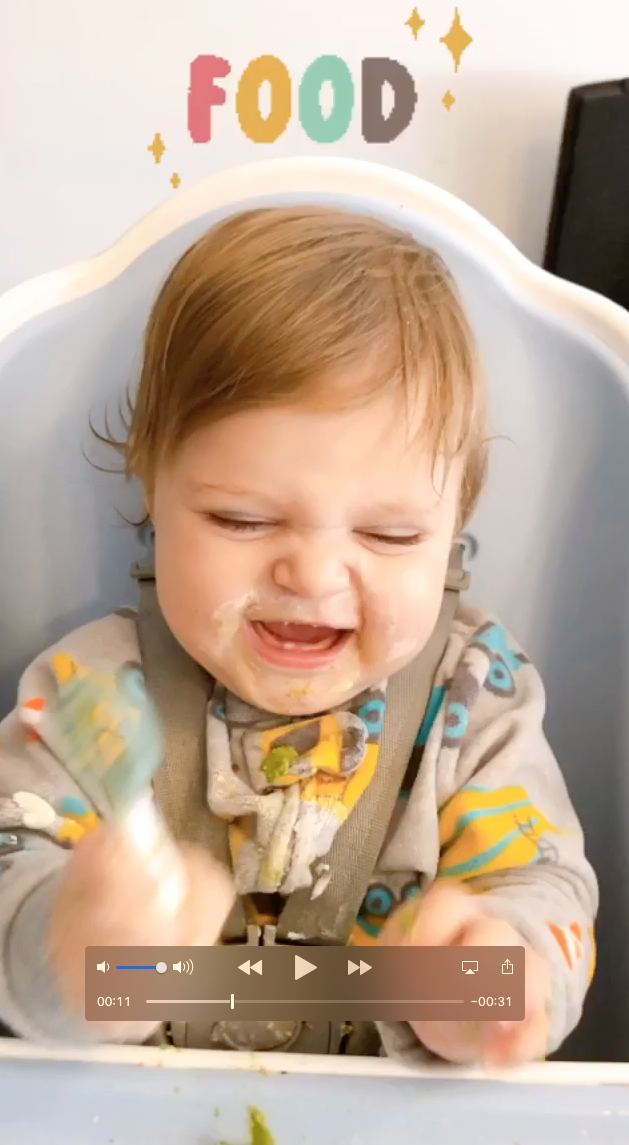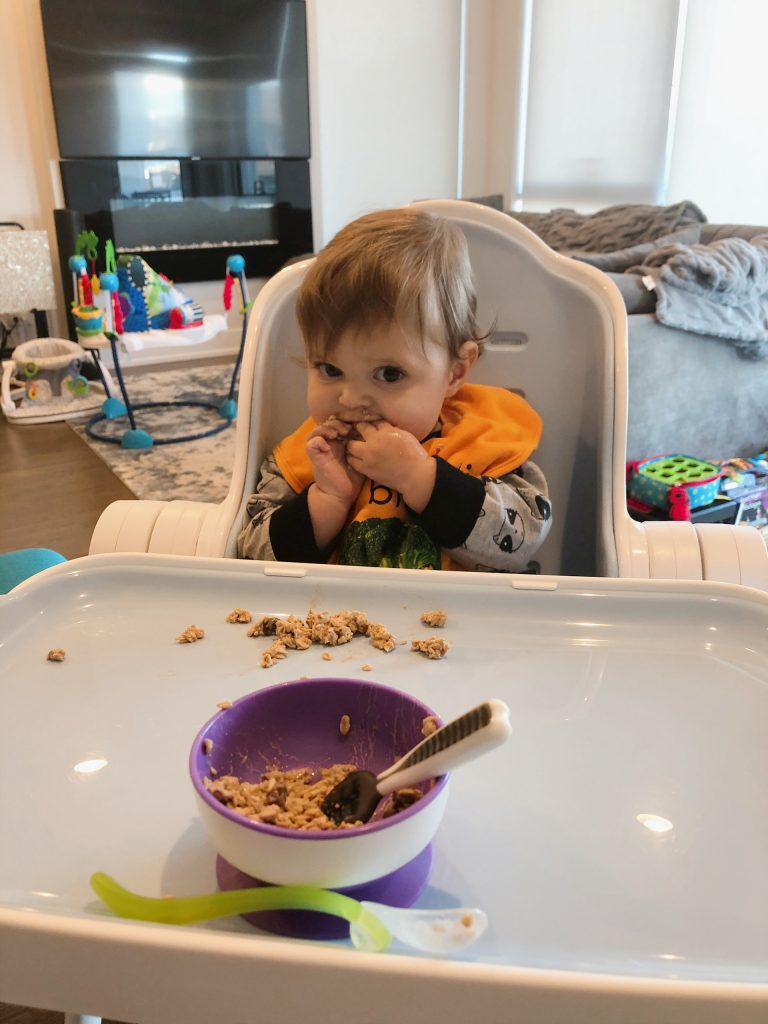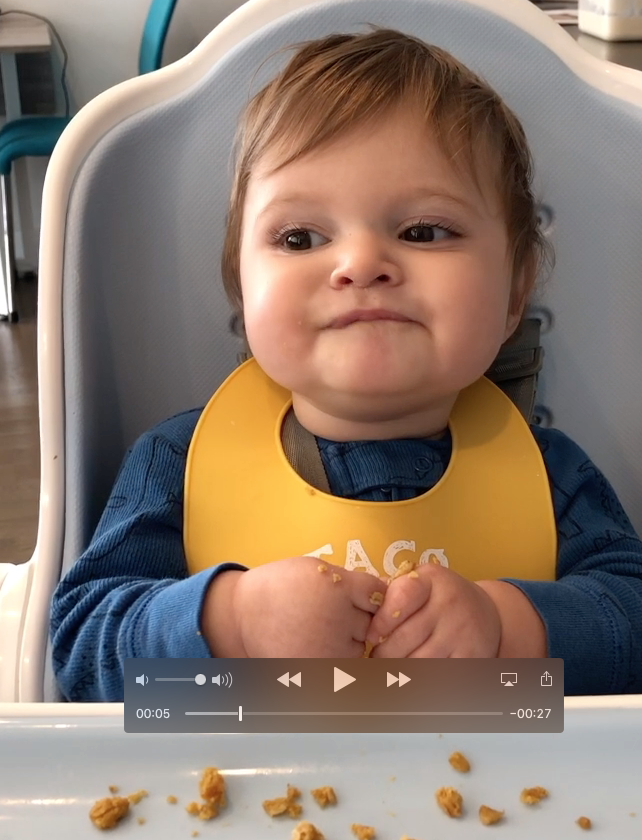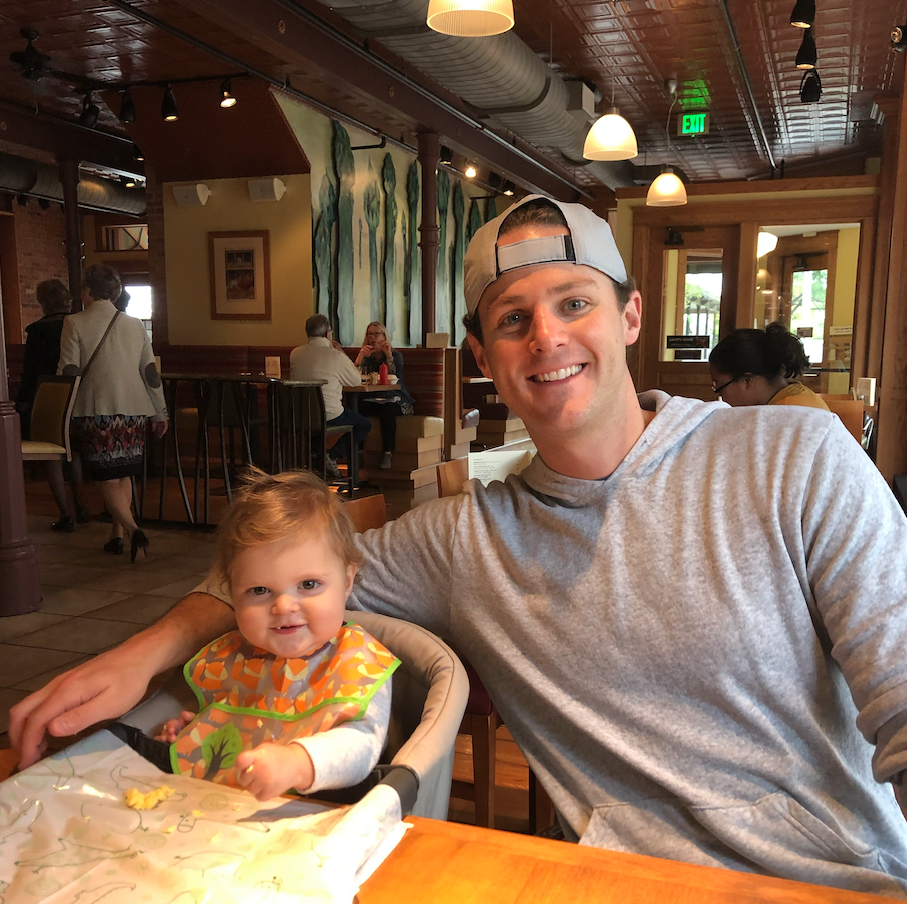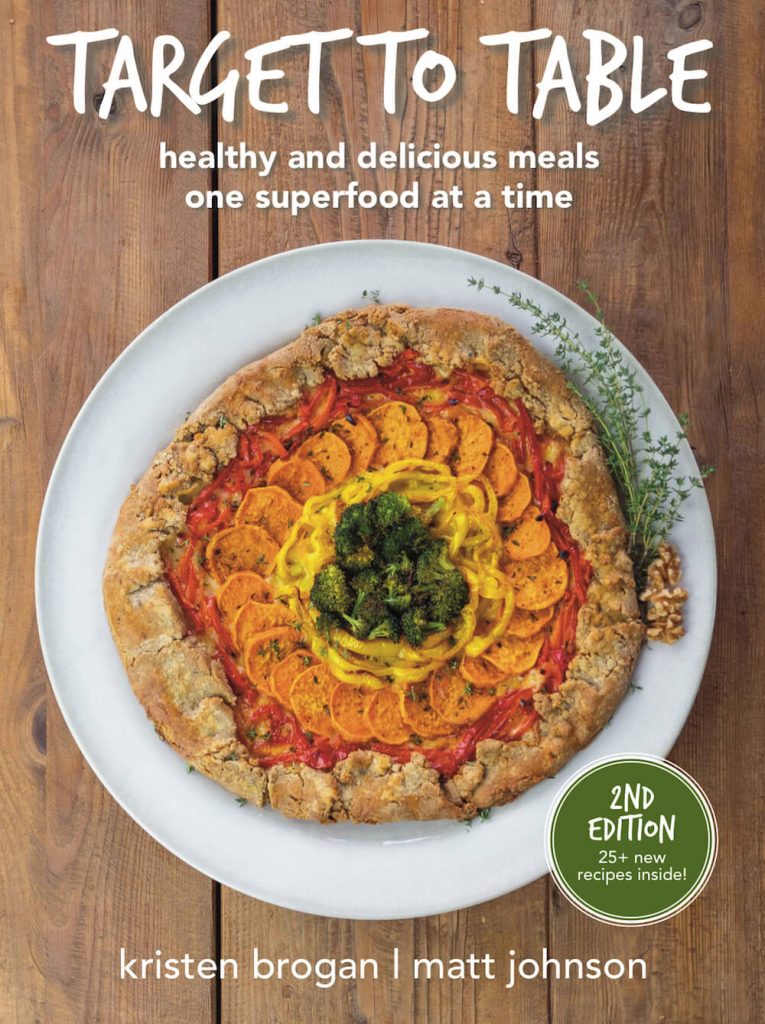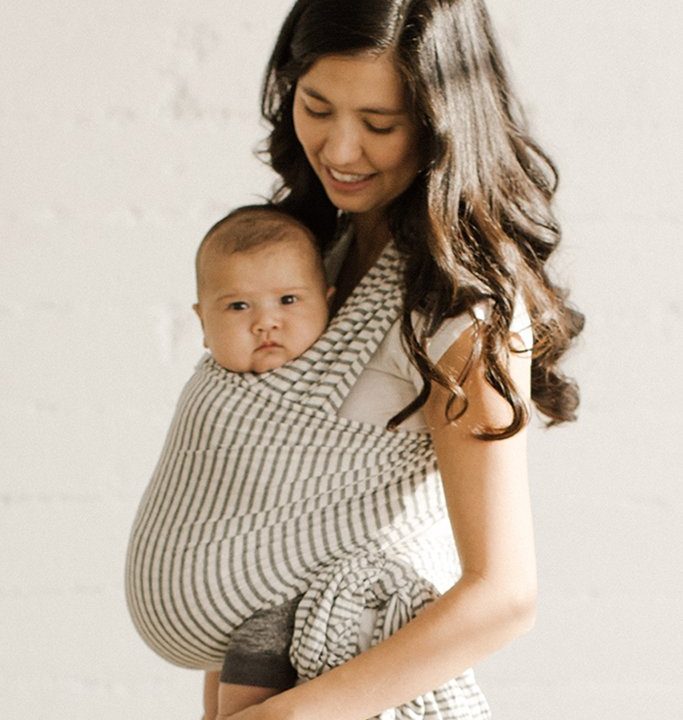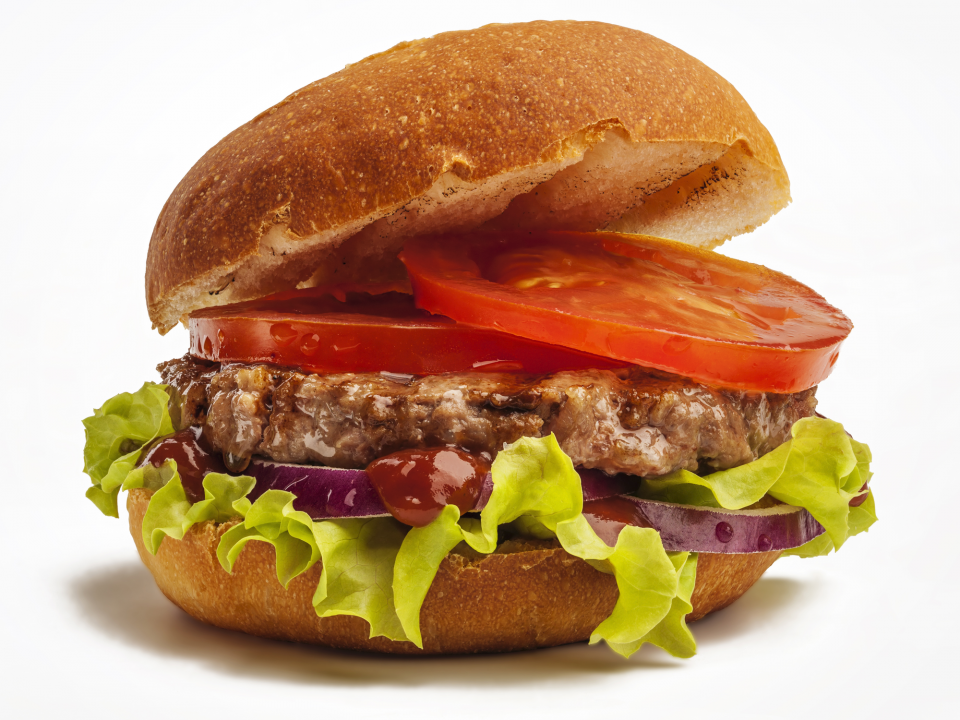
Plant Based Burgers. Healthy or Not?
October 22, 2019
4 Week Postpartum Pelvic Floor Therapy
January 9, 2020Do you struggle to get healthy meals on the table that your kids will actually eat? Are you interested in teaching your kids how to be an intuitive eater who enjoys all foods, especially the healthy ones? Are you looking to make family mealtime less hectic and more of an experience where you can re-connect? Well, there may be a different way to think about eating for you and your baby.
When I got pregnant, I found it fascinating to learn that most of baby’s taste buds are formed in utero from Mom’s diet. Ultimately, the healthier Mom eats, the healthier baby will eat. As a Dietitian I knew I wanted to raise a healthy eater and teach them that food is an experience. Along my pregnancy journey I came across the baby led weaning method which was very similar to what I teach as a Dietitian.
What Is Baby Led Weaning?
To be honest, I never quite understood why the concept of baby self- feeding was called baby led weaning since you technically aren’t weaning them off anything. Once baby starts to eat table foods around 6 months, you are still providing them with breast milk or formula as their main source of nutrition until one years old (and even thereafter). Food will just be complimentary until one year of age.
Baby led weaning is more of a self-feeding style where baby dictates how they eat and how much they eat. As the parent, you control what and when they eat which is one of the reasons it can be more nutritious than regular baby food. You as a parent, are in charge of what foods to first introduce and can therefore include a variety of nutritious foods from all food groups.
The way I like to explain “baby led weaning” is that your baby starts eating real foods that are prepared in a way that they can handle (teeth or no teeth). With this approach, there is no such thing as “baby food.” Baby is getting the same foods as the family just prepared in a way that meets their level of development.
Rather than start your baby on purees, your baby learns how to eat real foods as a way to experience all of the senses that go with it like taste, texture, temperature while developing important motor skills (use of hands and pincer grasp) and oral development (chewing, language). Example: crunchy foods can actually stimulate words.
Most importantly, baby led weaning is an eating style that teaches children how to make eating an experience that they can take with them into adulthood. It’s not about counting calories or eating the healthiest foods—it’s the entire experience of eating that is so powerful—the social aspect, the connection, and the love that goes into preparing homemade meals. This feeding and eating style have shown to make children less likely to diet because they naturally tend to be healthier and more adventurous eaters. I think about preparing meals for my son, Brady as a long-term investment. I also believe there is no better skill our children than how to cook meals that are nutritious and delicious.
“Only in recent decades have we begun overthinking and over processing our foods which has led to chronic dieting, chronic disease, and epic confusion about the best way to feed ourselves and our families.” -Born to Eat
Starting Baby Led Feeding
When my son, Brady was 6 months old, I began the baby led weaning style of feeding and started him on sweet potatoes, avocado, banana, broccoli, and asparagus. He loved every second of this new experience—how he could hold the asparagus spear in his hand, the way the broccoli floret broke off into pieces in his mouth, the delicious taste of banana, and the sweet and savory flavor of the sweet potatoes. A week after I began feeding Brady food, daycare asked if they could start feeding him baby food at school. They said that now that he was a certain age, he could join the other babies at the table for a pureed breakfast and lunch.
As much as I wanted to only do baby led weaning, I knew it wasn’t practical to ask my daycare to feed him in this way, nor should they and I decided that the social element he would be receiving from eating with his friends trumped everything else. It seems the combination of baby led weaning foods plus traditional baby food has made Brady open to everything. Plus, feeding pureed baby food can be a great way for other family members to bond with your child if they don’t feel comfortable feeding your baby real foods. Lil’ gourmets are my favorite baby food brand and are local to Chicago although they ship anywhere.
Throughout my baby led weaning journey I used the books, Baby Led Weaning by Gill Rapley and Tracey Murkett and Born To Eat by Leslie Schilling and Wendy Jo Peterson as my ultimate guides. Born to Eat was my favorite because it outlined how to pair foods from a nutrition perspective considering it was written by two dietitians.
“Born to eat is not just an approach to feeding using a baby led weaning style or self-feeding techniques—it’s a philosophy. We are born with an innate ability to eat and nourish our bodies.” -Born to Eat
Baby Food vs. Real Food
Commercial baby food became popular in the 1920 when women entered the work place and needed a convenient and quick way to feed their kids. Baby food or purees are no longer in their natural form or texture and may actually be considered a “processed food.”
Just like any processed food, baby food is easier and faster to consume which creates a more mindless way of eating. Purees can be easily consumed to provide fast calories. They don’t provide the same satiety benefits from eating foods in their natural form which contain more fiber and nutrients. Plus, we tend to trust foods in their natural state more than conventual foods that are mass produced. In fact, 95% of baby food tested contains toxic heavy metals.
When babies are used to the same tastes, textures and temperatures of pureed baby food, it can make eating table food a much harder transition. What eventually happens is that parents can’t take the fight at the table and begin to give their kids foods they know they will eat like macaroni and cheese and pizza. We then grow into adults who prefer unhealthy foods even though we weren’t born eating or craving food. We were born with an innate ability to eat nutritious foods that provide nourishment. The top five foods babies typically start on and love are sweet potatoes, carrots, squash, avocado, and banana.
The bottom line is that real food will not only be more nutritious than baby food, but it will also be more affordable. When you follow a born to eat baby led feeding philosophy, you don’t have to buy separate foods for the family or make multiple dishes for dinner using special kitchen gadgets.
“There’s no such thing as kid food. We aren’t saying that people who’ve used baby food did something wrong. We’re saying there’s another way.” -Born to Eat
Baby Led Weaning 101
How do you know your baby is ready to start on food?
Ideally, 6 months is the ideal age to start introducing foods. You should look for development signs of readiness such as:
- Baby sitting up on their own
- Tongue thrust is gone (pushing food out of mouth)
- Reaching or interest in what you are eating
Is it safe to feed my baby real foods at such a young age?
Babies can handle any food as long as it is in the right size and cooked appropriately. Foods should be soft enough that it can mash between your fingers or the roof of your mouth with your tongue. Between six to eight months, it’s best to cut foods into finger size pieces since babies don’t yet have the pincer grasp to pick up small foods. This way they can pick it up, bring it to their mouth and gnaw on it regardless if they have teeth or not. Remember, that food before one is just for fun and your baby may play more with their food than actually eat it. It may take a while for baby to realize that food actually tastes good and provides nourishment. Give them time, space and let them experience their first bites. It will only get better as time goes on. Around eight months baby should have a real interest in table foods and have a strong enough pincer grasp to pick up bite size pieces (think smaller than their little airway).

7 Months: Introduced High Allergen Foods (Eggs, Nut Butter, Salmon) Picture: Refried Beans (High In Iron/Protein + Scrambled Eggs)
What are the best foods to start on?
Ultimately, baby can eat any food as long as it’s prepared in a form that is mashable or easy for them to chew and swallow. Even mixed foods like casseroles, soups, etc are fine. Of course, you want to avoid processed foods or foods with added sugar. Stick to real foods (one ingredient foods) at first. Limit salt as baby’s kidneys haven’t fully developed. Personally, I didn’t worry so much about this especially since they aren’t consuming enough food for it to be a problem.
I started with one food each day to avoid overwhelming Brady. Our first foods were sweet potatoes, avocados, banana, mango, and steak. I cooked a tough cut of steak well done and served it in a finger like piece where Brady could grab and suck the juices. This is a great way to get in absorbable iron. I also added cumin to many things like refried beans to provide extra iron as well. I also found it helpful to buy a baby steamer to quickly cook certain foods to the appropriate texture.
After about a week, I started to introduce more than one food at a time and stuck with plant-based foods like fruits and vegetables with some protein foods like shredded chicken sprinkled in here and there. After a month of eating I started to introduce high allergen foods like nut butters, fish, and eggs. I even made homemade sourdough bread and fed him toast fingers as a way to introduce wheat/flour. If you have a family history of allergies, you may want to introduce a high allergen food (eggs, shellfish, soy, dairy, nuts, wheat) every few days to see if there is a reaction that you can pinpoint to a certain food. Research suggests introducing high allergen foods around 6 months to strengthen baby’s immune system to certain foods.
I recommend avoiding cow’s milk (even after a year) since the protein molecule is so hard for humans to breakdown and can lead to GI issues. My daycare did start introducing organic yogurt around 8 months which Brady seemed to like and tolerate quite well.
By the time Brady was 11 months, his bottom two teeth were developed enough for him to eat pretty much anything.
Favorite Foods at 6 Months
Breakfast
- Cooked oatmeal with cinnamon
- Chia Seed Pouches
- Scrambled eggs
- Quinoa (Cook and mix with cashew butter)
- Water in sippy cup or trainer cup (with your assistance)
- Smoothies (Put in clear sippy cup)
- I did buy organic teething crackers and puffs just to help him develop the pincer grasp but only introduced them when we were out of the house and had limited access to food or needed something quick
Lunch/Dinner
- Refried beans made in the instant pot with cumin + scrambled eggs
- Lentils with cumin and a little sea salt
- Tuna + avocado fingers (May add some avocado oil mayo to tuna)
- Salmon + steamed broccoli (Make sure salmon is very tender and flaky and serve in small pieces)
- Mashed potatoes + shredded chicken (you can throw whole chicken in crockpot)
- Steamed sweet potato fingers or mashed sweet potatoes with coconut milk
- Organic pasta (pappardelle was easy for him to grab and chew on)
- Steak Fingers (Cook tougher piece of beef well down and cut into finger shape for baby to suck on. The juices provide lots of iron and nutrients).
Snacks
- Mango fingers
- Banana (cut in half and keep skin on the bottom for better grip)
- Frozen breastmilk chunks or frozen berries in silicone baby feeder or pacifier
Favorite Foods at 8 Months +
Breakfast
- Cheerios
- Chia Seed Pouches
- Oatmeal (Cook with cinnamon and diced apple)
- Pancakes (Cut into small pieces)
Lunch/Dinner (Can use his baby steamer with instruction manual)
- Refried Beans (Cumin, salt) + eggs + peas
- Lentils with sea salt and cumin
- Tuna + avocado (May add some avocado oil mayo to tuna)
- Salmon + steamed broccoli
- Mashed potatoes + shredded chicken (you can throw whole chicken in crockpot or get a rotisserie chicken)
- Steamed sweet potato chunks + brown rice
- Spaghetti (Organic pasta, grass fed ground beef/bison + organic pasta sauce)
- Zucchini squash casserole with parmesan cheese and tomatoes (just serve in smaller pieces)
Snacks
- Mango chunks
- Banana chunks
- Hard boiled eggs, diced
- Muffins (broken into small pieces)
- Peas
- Yogurt
Is gagging normal?
Gagging is actually the first sign that baby is grasping the eating process. It shows that baby has oral control and can safely handle foods and spit the food out if they need too. The gag reflux is closer up on the tongue than adults which stops food from going too far back in their throat. Gagging is perfectly normal, but choking is not. Gagging is where baby makes noises and coughs up food that they may not be able to chew or swallow. Choking is where food gets logged in the airway and baby makes no sound or turns blue. Make sure to always be near your baby when feeding and take a CPR course before starting baby led weaning and always stay near your child when feeding.
What are the high risk choking foods?
There are certain foods to avoid until your baby gets to be a toddler, has most of their teeth and can handle certain foods with ease.
- Raw apple, carrot, celery or other hard uncooked fruits/vegetables
- Round foods like grapes, whole nuts, olives, and hot dogs/sausages
- Blueberries and peas can be introduced later or cut in half
- Dried fruits like raisins, dates or prunes if not cut down into smaller pieces
- Raisins can be safe if they are cooked and soft (I usually put them in oatmeal or muffins)
- Popcorn (this is an especially dangerous one and best to avoid until after 5 years old)
- Chunks of peanut butter or hummus (do not serve on a spoon as this can get lodged in the airway. Spreading on toast fingers is a great way to introduce these foods)
- Marshmallows
- Hard candies
- Gum
How to best serve foods for feeding?
Ideally, whatever works best for you and your baby. Initially I just served foods directly on Brady’s highchair tray. Before he was able to pick foods off the tray, I actually would hand him finger size pieces of certain foods for him to grab onto and bring to his mouth. Or I would put things on a spoon and hand it to him or place it on his tray for him to pick up.
As he got older, around 8 months, I started to introduce bowls and ezpz plates which made it easier for him to grab the food. However, he still liked using his hands the best.
Around 8- 10 months it’s good to introduce utensils (baby size) for baby to development long-term feeding skills. They should be able to use utensils to scoop things out of a bowl or plate.
You also want to make sure you have a high chair that sits baby up high enough for them to easily reach their tray of food. I loved this highchair although the tray was hard to get off and I usually just wiped the tray down after eating versus taking the tray off to clean.
How many meals/snacks to serve?
Start with one to two meals per day for the first month. We did dinner on the weeknights and breakfast and dinner on the weekends.
Around 7 months, daycare started to serve breakfast and lunch and I continued to serve dinner each day. By 9 months he was getting 3 meals plus 2 snacks per day. Around 10 months you may see baby taking less breastmilk or formula and eating more foods.
Isn’t baby led weaning extremely messy?
Yes but it’s totally worth the fun! Early on, baby is only eating a tablespoon or two of food so even if they drop things on the floor, it’s easy enough to clean up. As a parent, embrace the mess and the entire experience. If you are stressed, baby will sense the eating experience to be stressful or have a negative association with mealtime. Remember that everything can be cleaned up. Instead, encourage them to chew, chew, chew or say yum, yum, yummy.
Baby may be messier in the beginning, but they will soon learn how to feed themselves more efficiently and you will find that the eating process is much neater as they get older.
I found that the floor mat wasn’t necessary, and it was easier just to clean the floor with a wipe or spray. The silicone bibs with the tray catcher are amazing at catching the missed food from baby’s mouth.
I also found it to be easiest to strip baby naked to just a diaper for feeding and got a small bath seat to hose him down in the shower if needed. Ultimately, a wet wash cloth worked best to wipe him down.
What if baby doesn’t like a certain food?
Just because baby makes a bad face when they eat something doesn’t mean they don’t like it. They are experiencing tastes on their palate for the first time and it can be quite shocking. Continue to introduce foods and prepare them in new ways. I’ve read it can take about 11 times to like a new food—even for adults. I gave my son a grape leaf filled with rice and ground beef for the first time and he threw it in disgust. The next night I gave it to him again and he took a huge bite out of it.
Plus, babies don’t understand at first that food actually provides nourishment. All they know is that it goes in their mouth. With more experience they will begin to eat more and more, enjoy different flavors, and feel satisfied and content after a meal.
Be a role model, healthy eating starts with you!
Family meals model for our children how to eat, how to behave at the table and how to try new foods. Give your baby space to experiment and make food a fun experience. Continue to introduce new foods and flavors.
Baby Feeding Testimonial
“We are doing BLW and I was all gung-ho at first and now am getting super nervous. My son has no teeth and I know that’s not a big deal but I am just so nervous when he actually takes a bite of something that he will choke. His first meal he actually chewed and swallowed and so he has been eating for like 2 weeks. When I mash things, I can breathe but finger foods…ay! Any tips for getting comfortable? He took some amazing bites of avocado and banana today a chewed and swallowed but did gag on one piece and I almost had a heart attack… I’ve read BLW, Born to Eat, Baby Led Feeding and was super confident before starting this process and now that I am in it, I have lost all confidence.”
My Response
I know it’s scary but babies are fully capable of learning how to eat without much help and the gagging is just part of the process. What really helped me is to always remember that food before one is just for one and that breastmilk/formula will provide all of their nutrients they need. The whole goal of baby led weaning is to help make food and eating an experience so that he can learn textures, temperatures and how to eat real food. It’s basically just serving them real foods that are cooked appropriately. Only serve foods that you feel comfortable until baby gets better at chewing and feeding. It will continue to get easier and more fun, I promise. Continue to offer new foods and flavors and make mealtime fun for you and your baby.
Cheers to making eating an experience for the whole family.
Live Deliciously!
Kristen 🙂

